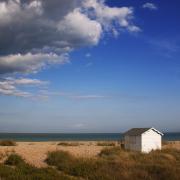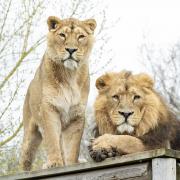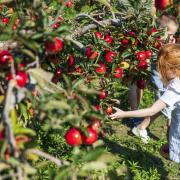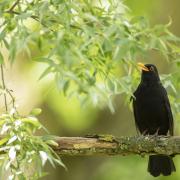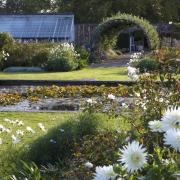The Turtle Dove is Europe’s only migratory dove and is renowned for its purring call during the summer. This strikingly marked dainty bird is built for migration, spending the winter months in sub-Saharan Africa and returning to the UK in late April to breed.
Sadly, the UK population of Turtle Doves has fallen by 98% since 1970. The main factors associated with this decline have been the loss of suitable breeding habitat and unsustainable levels of hunting along its migratory flyway, particularly through France, Spain and Portugal. However, an important milestone was the establishment of a carefully negotiated ban on hunting this species in 2021. This has meant that approximately one million of these wonderful birds have been saved from shooting in each of the last three years. In the UK, research confirms that restoring suitable nesting and feeding habitat are key actions to support the recovery of the breeding population in this country.

Turtle Doves have three important requirements to maintain a population. Firstly, they need food. For Turtle Doves, this is a seed-rich habitat with extensive bare ground and low vegetation. This means that they can easily forage for seeds from a variety of arable plants like Chickweed and Fumitory. Secondly, available nesting habitat is needed, and dense thorny hedgerows or patches of scrub provide perfect cover. Also important is access to water as a seed-based diet is low in water content. This is a vital resource for parent birds to produce a substance called crop milk which is essential for raising healthy chicks.
Operation Turtle Dove was formed in 2012 to drive forward the recovery of this species in the UK. The project is a partnership between the RSPB, Natural England, Pensthorpe Conservation Trust and Fair to Nature. It operates across East Anglia and the Southeast of England, with a team of eight Turtle Dove Advisors providing face-to-face advice to landowners about managing land to support the species. The project operates on a landscape-scale and currently works with a wide-variety of landholdings including farms, vineyards, golf clubs, campsites, nature reserves, community groups and even large gardens.
Kent is the stronghold for Turtle Dove in England. The 2021 National Turtle Dove survey estimated that the county held about 700 pairs, representing a third of the estimated UK population of 2,100 territories.

Establishing habitat for Turtle Doves does take time, but Operation Turtle Dove is seeing positive results with birds breeding again at sites where they’ve been absent for many years. Westbery Manor in Wateringbury, Kent, is one site where they have been seen again. Chair and owner William English, CBE is delighted: “From 2020, Westbery Manor has been working within an agricultural land cluster to bring back the Turtle Dove. Last year, cameras provided by RSPB captured images of visiting Turtle Doves. Westbery Manor is delighted to see this species return and thanks to Nicole Khan, RSPB, for her outstanding leadership in this project.”
And there is even better news. By providing habitat for Turtle Doves, other species benefit too, including rare arable plants, pollinating insects, and other farmland birds such as Yellowhammer.
2023 saw a record year of effort across the project areas since it began in 2012, with over 260 farm holdings providing 230 hectares of prime Turtle Dove feeding habitat – the equivalent of over 350 full-sized football pitches. The project is so grateful to the efforts of the farmers and landowners who are doing amazing work to enable the recovery of this beautiful bird.

How to help
If you see or hear a Turtle Dove, please report your sightings, details of how to do this are on the Operation Turtle Dove website. Alternatively, if you’re interested in creating Turtle Dove habitat, please get in touch via the website at operationturtledove.org
















